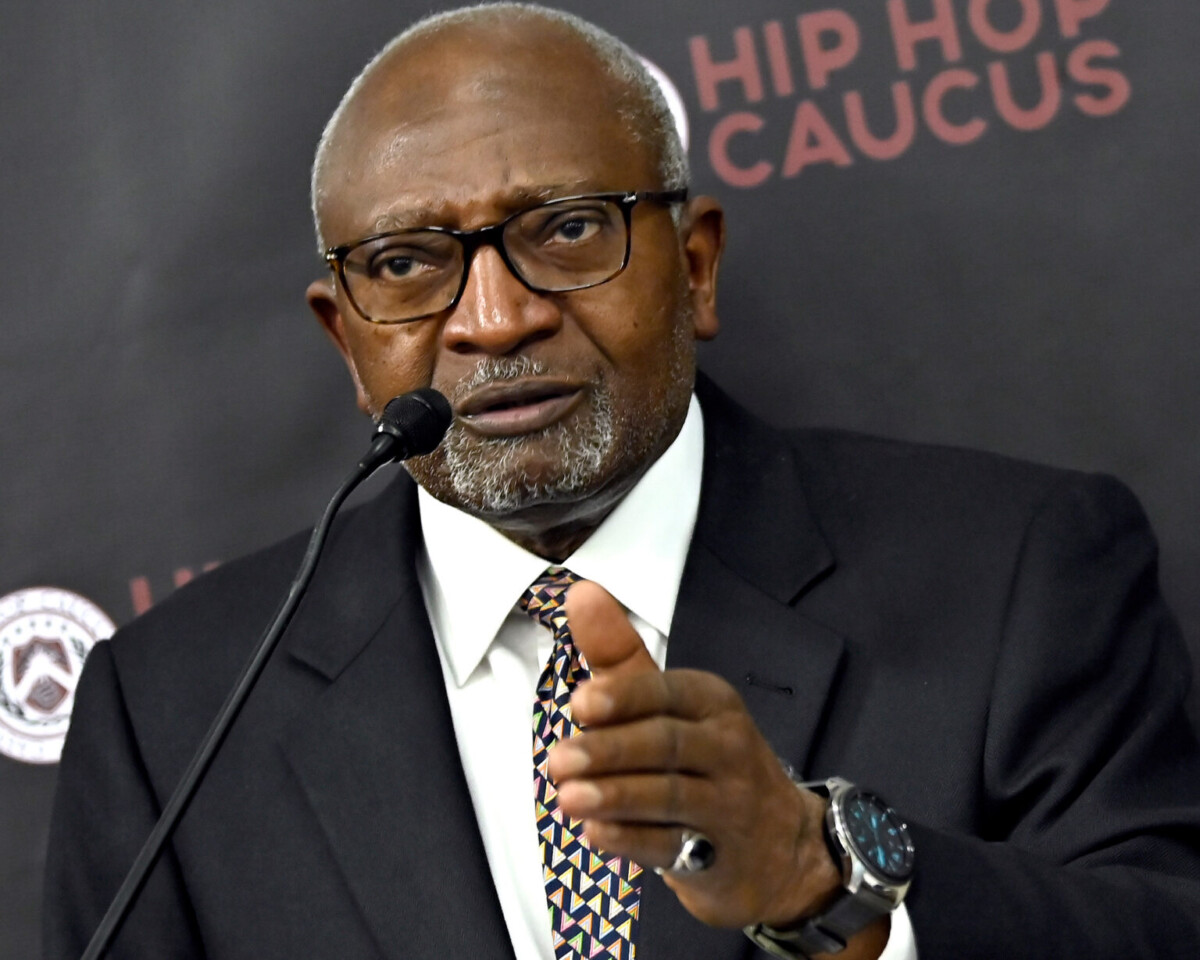
Historically black colleges and universities (
HBCUs) have played a significant role in training African Americans and other leaders of color in all fields. More than 80 percent of the
104 HBCUs are found in the Gulf Coast and South Atlantic region of the United states—a region of the country where intense hurricanes, drought, heatwaves, flooding, and other climate-sensitive hazards are commonplace.Many southern communities where HBCUs are located and where they draw the vast majority of their students are at
ground zero in the fight for climate justice.
It is no accident the modern
Civil Rights Movement and the
Environmental Justice Movement were born in the South, where over
55 percent of African Americans currently reside. Students from HBCUs provided crucial leadership and played a
pivotal role in both of these movements. The climate-related challenges facing our communities today are no less daunting than those related to dismantling the infrastructure of
institutional racism six decades ago.
In 2011, a challenge was laid down for HBCUs to
step up on climate change. In April 2013, a consortium of HBCUs, led by
Dillard University and
Texas Southern University, convened the
First Annual HBCU Student Climate Change Conference in New Orleans. And in 2013, Texas Southern University in collaboration with its sister HBCU institutions, launched the
Climate Education Community University Partnership (CECUP), a collaboration of HBCUs and community based organizations in ten Gulf Coast and South Atlantic states, the District of Columbia and the Virgin Island. The mission of the CECUP is to address climate vulnerability and build community resilience. And in April 2014, the consortium convened the
Second Annual HBCU Student Climate Change Conference in New Orleans. A
third annual HBCU climate change convening is planned for March 2015 in New Orleans.
Flooding from
Hurricane Katrina in New Orleans drowned that city’s three HBCUs (Dillard University, Xavier University and Southern University at New Orleans) in 2005. Three years later,
Hurricane Ike caused major property damage to Texas Southern University in Houston. In the aftermath of these and other severe weather events, the question of the day for many frontline communities is, “will the
government response to climate change be fair?”
Climate-related
disasters in the southern United States have outnumbered those in other regions of the U.S. annually in both scale and magnitude by a ratio of almost 4:1 during the past decade. The Southeast U.S. for the period 1980-2012 had more
billion-dollar disasters than the rest of the country combined. The southern region is vulnerable because of its physical location. It is also vulnerable because of the high prevalence of concentrated
poverty,
uninsured households, income and wealth
inequality,
health care disparities, and
food insecurity—combined create a perfect storm of vulnerability if and when natural and human-made disasters strike.
Given its unique history, a “southern initiative” is needed to address climate vulnerability,
environmental injustice and the “
look-the-other-way”practice of
unequal protection and develop strategies for building just and resilient communities.
Numerous reports document climate change “
hot-spots” and the southern region’s
vulnerability, including the impact of drought,
heat islands, flooding, hurricanes and
sea-level rise—areas where low-income households,
African Americans and other people of color are placed at special risk of
poor health,
socioeconomic barriers and climate-related challenges resulting from
discriminatory government policies and actions. A few of these studies are listed below:
- In the Wake of the Storm: Environment, Disaster and Race After Katrina (Pastor, Bullard, Boyce, Fothergill, Morello-Frosch, and Wright, 2006)
- Vulnerability and Climate Change in the Southeast U.S. (Oxfam, 2009)
- Climate Change Impacts in the Southern United States: Draft Discussion Paper (Stratus Consulting Inc. for EPA Region 4, 2010)
- Social Vulnerability to Climate-Sensitive Hazards in the Southern United States (Christopher T. Emrich and Susan L. Cutter, 2011)
- Climate Change, Environmental Challenges and Vulnerable Communities: Assessing Legacies of the Past, Building Opportunities for the Future (Joint Center for Political and Economic Studies 2012)
- Climate Change and the Southeast(EPA, 2012)
- The Wrong Complexion for Protection: How the Government Response to Disaster Endangers African American Communities (Bullard and Wright, 2012)
- Climate of the Southeast United States: Variability, Change, Impacts, and Vulnerability (NCA Regional Input Reports, 2013)
- National Climate Assessment: Southeast and Caribbean (NCA, 2014)
- Risky Business: The Economic Risks of Climate Change in the United States – The Southeast (Kate Gordon et al., 2014)
To view slideshow presentation on
“Climate Change and Vulnerability: Why a U.S. Southern Climate Change Initiative is Needed” click
HERE
 Historically black colleges and universities (HBCUs) have played a significant role in training African Americans and other leaders of color in all fields. More than 80 percent of the 104 HBCUs are found in the Gulf Coast and South Atlantic region of the United states—a region of the country where intense hurricanes, drought, heatwaves, flooding, and other climate-sensitive hazards are commonplace.Many southern communities where HBCUs are located and where they draw the vast majority of their students are at ground zero in the fight for climate justice.
It is no accident the modern Civil Rights Movement and the Environmental Justice Movement were born in the South, where over 55 percent of African Americans currently reside. Students from HBCUs provided crucial leadership and played a pivotal role in both of these movements. The climate-related challenges facing our communities today are no less daunting than those related to dismantling the infrastructure of institutional racism six decades ago.
In 2011, a challenge was laid down for HBCUs to step up on climate change. In April 2013, a consortium of HBCUs, led by Dillard University and Texas Southern University, convened the First Annual HBCU Student Climate Change Conference in New Orleans. And in 2013, Texas Southern University in collaboration with its sister HBCU institutions, launched the Climate Education Community University Partnership (CECUP), a collaboration of HBCUs and community based organizations in ten Gulf Coast and South Atlantic states, the District of Columbia and the Virgin Island. The mission of the CECUP is to address climate vulnerability and build community resilience. And in April 2014, the consortium convened the Second Annual HBCU Student Climate Change Conference in New Orleans. A third annual HBCU climate change convening is planned for March 2015 in New Orleans.
Flooding from Hurricane Katrina in New Orleans drowned that city’s three HBCUs (Dillard University, Xavier University and Southern University at New Orleans) in 2005. Three years later, Hurricane Ike caused major property damage to Texas Southern University in Houston. In the aftermath of these and other severe weather events, the question of the day for many frontline communities is, “will the government response to climate change be fair?”
Climate-related disasters in the southern United States have outnumbered those in other regions of the U.S. annually in both scale and magnitude by a ratio of almost 4:1 during the past decade. The Southeast U.S. for the period 1980-2012 had more billion-dollar disasters than the rest of the country combined. The southern region is vulnerable because of its physical location. It is also vulnerable because of the high prevalence of concentrated poverty, uninsured households, income and wealth inequality, health care disparities, and food insecurity—combined create a perfect storm of vulnerability if and when natural and human-made disasters strike.
Given its unique history, a “southern initiative” is needed to address climate vulnerability, environmental injustice and the “look-the-other-way”practice of unequal protection and develop strategies for building just and resilient communities.
Numerous reports document climate change “hot-spots” and the southern region’s vulnerability, including the impact of drought, heat islands, flooding, hurricanes and sea-level rise—areas where low-income households, African Americans and other people of color are placed at special risk of poor health, socioeconomic barriers and climate-related challenges resulting from discriminatory government policies and actions. A few of these studies are listed below:
Historically black colleges and universities (HBCUs) have played a significant role in training African Americans and other leaders of color in all fields. More than 80 percent of the 104 HBCUs are found in the Gulf Coast and South Atlantic region of the United states—a region of the country where intense hurricanes, drought, heatwaves, flooding, and other climate-sensitive hazards are commonplace.Many southern communities where HBCUs are located and where they draw the vast majority of their students are at ground zero in the fight for climate justice.
It is no accident the modern Civil Rights Movement and the Environmental Justice Movement were born in the South, where over 55 percent of African Americans currently reside. Students from HBCUs provided crucial leadership and played a pivotal role in both of these movements. The climate-related challenges facing our communities today are no less daunting than those related to dismantling the infrastructure of institutional racism six decades ago.
In 2011, a challenge was laid down for HBCUs to step up on climate change. In April 2013, a consortium of HBCUs, led by Dillard University and Texas Southern University, convened the First Annual HBCU Student Climate Change Conference in New Orleans. And in 2013, Texas Southern University in collaboration with its sister HBCU institutions, launched the Climate Education Community University Partnership (CECUP), a collaboration of HBCUs and community based organizations in ten Gulf Coast and South Atlantic states, the District of Columbia and the Virgin Island. The mission of the CECUP is to address climate vulnerability and build community resilience. And in April 2014, the consortium convened the Second Annual HBCU Student Climate Change Conference in New Orleans. A third annual HBCU climate change convening is planned for March 2015 in New Orleans.
Flooding from Hurricane Katrina in New Orleans drowned that city’s three HBCUs (Dillard University, Xavier University and Southern University at New Orleans) in 2005. Three years later, Hurricane Ike caused major property damage to Texas Southern University in Houston. In the aftermath of these and other severe weather events, the question of the day for many frontline communities is, “will the government response to climate change be fair?”
Climate-related disasters in the southern United States have outnumbered those in other regions of the U.S. annually in both scale and magnitude by a ratio of almost 4:1 during the past decade. The Southeast U.S. for the period 1980-2012 had more billion-dollar disasters than the rest of the country combined. The southern region is vulnerable because of its physical location. It is also vulnerable because of the high prevalence of concentrated poverty, uninsured households, income and wealth inequality, health care disparities, and food insecurity—combined create a perfect storm of vulnerability if and when natural and human-made disasters strike.
Given its unique history, a “southern initiative” is needed to address climate vulnerability, environmental injustice and the “look-the-other-way”practice of unequal protection and develop strategies for building just and resilient communities.
Numerous reports document climate change “hot-spots” and the southern region’s vulnerability, including the impact of drought, heat islands, flooding, hurricanes and sea-level rise—areas where low-income households, African Americans and other people of color are placed at special risk of poor health, socioeconomic barriers and climate-related challenges resulting from discriminatory government policies and actions. A few of these studies are listed below:





